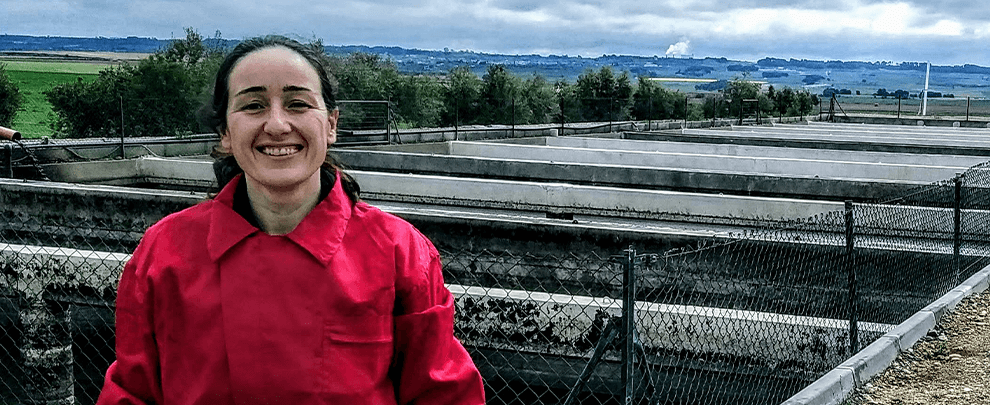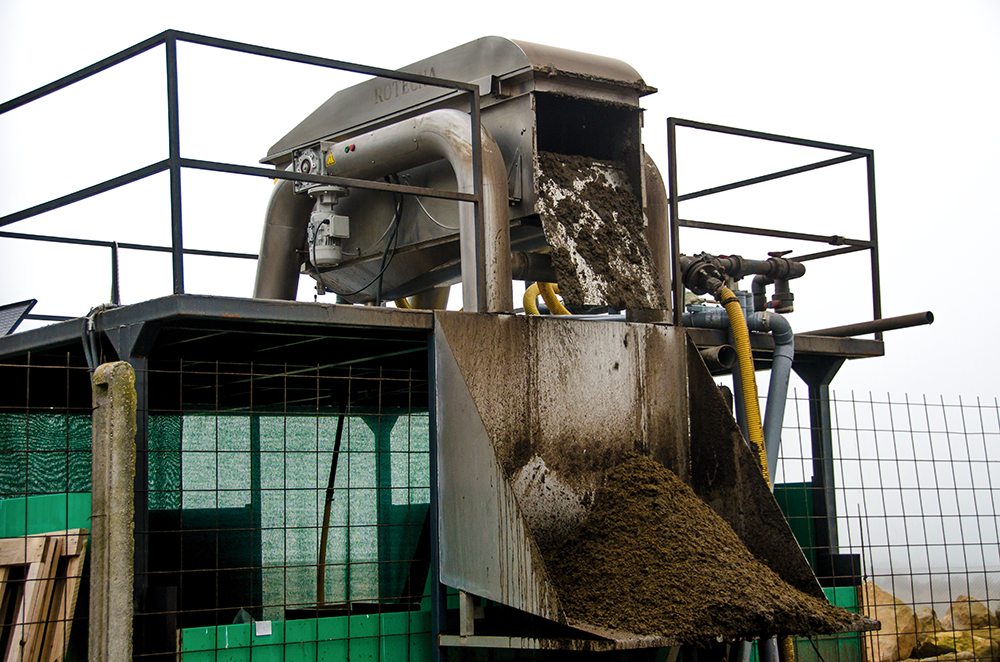Blog
Blog

R. Gallart: "In slurry management we do things because they work"
23 of June of 20 - News
The slurry management is a problem in the pig sector nowadays, which must move towards better management of its waste to produce more sustainably for its environment if it wants to continue growing. In this "Pig Information," we talked about the changes in slurry management with Rosa Gallart, an agricultural engineer at the GSP (Pig Sanitation Group) in Lleida.
Why is improving slurry management one of the main challenges for the pig sector in the future?
Slurry is a by-product that is generated on farms, and if you must discard it, it becomes waste; therefore, its management must be done correctly. Along this line, any sector that wants to improve and be sustainable must produce without affecting the environment, nature, which provides us with the components that, a posteriori, we will need to produce, in our case, meat. Therefore, we cannot take the slurry and use the soil as a basin, since this will stop it being fertile and will not provide us with the food we need. It is the same with groundwater.
What are the harmful effects of slurry?
The slurry itself does not have harmful effects, but it depends on how we use it. If we use it properly, that is, if we apply the slurry according to the needs of each crop and follow a fertilising strategy, slurry provides plants with many of the nutrients they need for their growth, such as nitrogen, phosphorus, potassium... However, if we apply it in an uncontrolled way, without considering the quantities of nutrients that each crop needs, we may be over fertilising the soil and causing a harmful effect. For example, a common and mistaken practice is to apply the slurry using a certain number of containers as a criterion. In this case, more nitrogen was undoubtedly being applied to the soil than the crop needed.
Historically, was the sector not doing things well?
The problem is that there was not enough knowledge about the slurry, and the only premise for its use was: "I have this slurry, I have these lands; therefore, all my slurry will serve to fertilise my lands." At this moment, when agriculture and livestock are separate activities and might be managed by different owners, breeders find that the slurry they produce cannot be applied to their lands, either because they do not have any or is insufficient, a fact that causes them to resort to third parties to apply the slurry on their property. But with this change in activity type, there must also be a mindset change: we must stop using containers to apply a concentration of nutrients, that is, kilograms of nitrogen, phosphorous and potassium. This requires a shift in the way manure is managed and therefore, more knowledge about its use as a fertiliser.
What are the legal limits of applying slurry to the soil?
Legally, some limitations come from a European command. This is a limitation according to the water nitrates, which proves that, if in an area it is detected that the groundwater has a concentration higher than 50 ppm, it must be declared as a vulnerable area and the application of organic nitrogen regulated. The established limit is 170 kilos of nitrogen from organic fertilisers per hectare per year.
What has the sector done to reduce slurry production?
Until now, action has been taken mainly on animal feeding. Diet changes have been applied to get animals to excrete less nitrogen and phosphorous. In this sense, food consumption has been adapted to each production phase, so that the animal retains the maximum nitrogen and phosphorous that is supplied to it. On the other hand, the sector has also adjusted the amount of protein in diets and has supplemented it with synthetic amino acids, which are more assimilable. The same happens with phosphorus: additives are used, such as phytases, which help better digestion and prevent the animal from excreting as much. Finally, investments have also been made to change and improve water systems on farms to reduce the volume of manure. The sector has become aware of the importance of proper flow regulation, leak control, inspections to detect foreseeable problems, the installation of more efficient drinking sources and the importance of diets that do not require much water.

Tecnapur solid-liquid separator in operation. Photo: Rotecna.
We could also talk about slurry management. What options are there?
The different handling systems that exist help us to give slurry a modified use: they allow us to concentrate nutrients and separate fractions to provide a more adjusted method for the needs of the crops, eliminate some excess nutrient, prepare the by-products that we obtain for a possible sale or return in a market as raw materials for fertilisers, etc. Currently, most farms take slurry from their rafts or pits and apply it directly to the field. Only with a simple solid-liquid separation can we obtain two more homogeneous segments and, for example, use the solid part to apply it thoroughly before sowing. The liquid component can then be applied, dosed throughout irrigation by a cover. I want to think that the increase of slurry handling systems on farms will help change the legislation. In this sense, the solid-liquid separation is the first phase in any type of procedure. It is a system that will have to be implemented in any farm that wants to go further in the management of its slurry or wants to differentiate itself, be able to market the solid portion to a centralised factory and keep the liquid part for the land around their farm.
What relationship is there between good or lousy slurry management and production figures?
Failure to manage slurry properly always comes at a cost. Alternatively, proper management always has advantages. Positive effects on production, especially in the realm of animal health, can be gained by improving slurry storage. If the slurry is held inside the farms, in the pits, since it has a large amount of nitrogen in ammoniacal form, it creates a hostile environment inside the spaces that can cause respiratory problems in animals. Besides, they also lower their defenses, making them more susceptible to disease. Therefore, just by managing the slurry inside the warehouses, productive figures can be improved. Interchangeably, poor management can reduce the statistics.
Is the sector prepared and aware to take on these changes?
Some areas are very aware but not prepared. In general, the entire sector must be ready to take this step. This problem already arose with the animal welfare regulations because we are always playing catch-up with the rules. I think we must change our approach and believe that we do things because they work and offer us a service, not only to follow the law. Therefore, it is necessary to lessen bureaucracy and realise that when a person implements a processing system, it is understood that it is to improve its management, not to solve a problem on paper only. If we do so, the change will be progressive and positive. However, the administration needs to act as an arbitrator: when it implements a standard for the improvement of exercise control, whoever does it wrong will see their figures reduced. If this does not happen, we will never be able to advance in proposing changes in the slurry management system.






